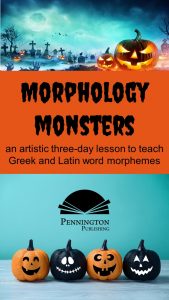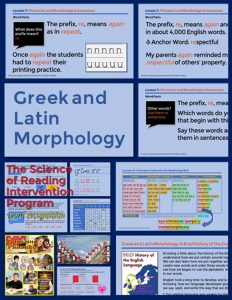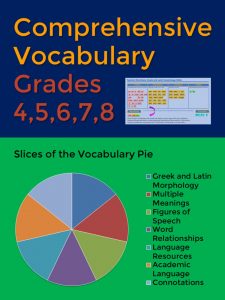Sounds to Print Phonics Games

FREE Google Slide Reading Games
Grades 4-adult reading intervention teachers need efficient, evidence-based instructional resources, such as these free sounds to print phonics games, to accelerate reading and spelling acquisition. Students play the games on interactive Google slides as review activities after systematic phonics and spelling instruction. The 54 slides, each with 4 games and a spelling dictation, have been designed to combine phonemic segmentation, blending, and manipulation, letter sounds knowledge, decoding, spelling, vocabulary, and sentence construction. Now that’s efficient practice!
The no prep games begin with the basic code: CVC, CVCC, CCVC, CCVCC, CVCe, CVVC for activities 1–24. Slides 25–55 cover advanced phonics with multi-syllabic words: vowel digraphs, consonant-final e, diphthongs, r-controlled vowels, schwa, and Greek and Latin influences. Whereas other switch it, word ladder, word chain activities only change one letter, the advanced phonics, multi-syllabic slides require not one, but two or more switches. More challenging for older reading intervention students! Since these games are whole class review activities, start on the slides which match your instruction and play some or all of the games as time permits. Plus, the Google slides are shared as editable files. Add, delete, or substitute to customize as you wish!
The CHANGE IT! SOUNDS CHALLENGE! SOUND JUMBLES! and WHAT’S MISSING? phonics games are ready to play. Simply display the focus Google slide and share the same slide with your students. Easy-to-follow scripted teaching directions accompany the slides. The directions follow the sounds to print Hear it! Say it! Spell it! and Read It! approach. Not sure which sounds-spellings practice and game slides your students need? Check out my free vowel and consonant sounds phonics assessment and the comprehensive diagnostic spelling assessment (available in both American and Canadian English versions). Click Diagnostic Literacy Assessments.

Sounds to Print Phonics Games
Teaching Script for Sounds to Print Phonics Games
CHANGE IT! WORDS
- The word is _____. Word?
- Say the sounds as you drag the cards down (first word).
- Say the sounds as you change ‘em around (rest of the words)
- Check the display and make yours like mine.
- Let’s say the sounds (point to each sound).
- Let’s blend the sounds. Word?
- Who can use this word in a sentence?
SOUNDS CHALLENGE! Drag the cards down as you hear these sounds.
SOUND JUMBLES! Drag the cards down as you hear the sounds; then change ‘em around.
WHAT’S MISSING? Drag the cards down as you hear the sounds, and add what’s missing.
SPELL IT ! Let’s spell the words.
Check out the YouTube Video Overview to see the four games in action, then grab these free resources for your students.
FREE Sounds to Print Phonics Games (Directions and Google Slides)
Get the Sounds to Print Phonics Games FREE Resource:
![]()
Mark Pennington is the author of The Science of Reading Intervention Program for grades 4-adult reading intervention. The comprehensive year-long program consists of three components (offered separately or as a BUNDLE): Word Recognition (Word Recognition Preview) with the Sam and Friends decodables (first 18 weeks); and Language Comprehension and Assessment-Based Instruction (last 18 weeks). Accelerated and efficient sounds to print (synthetic/linguistic) instruction, coupled with all the “other side of the rope” instruction. Written by a teacher (MA reading specialist) for teachers and their students, this no advance training, no prep, minimal correction, scripted program is ideal for new and/or veteran teachers. Check out the teacher testimonials and program samples.
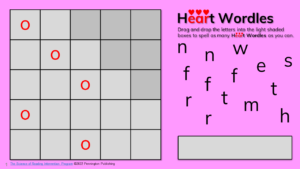



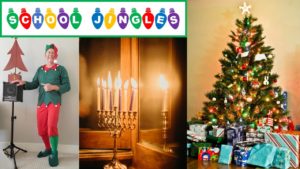

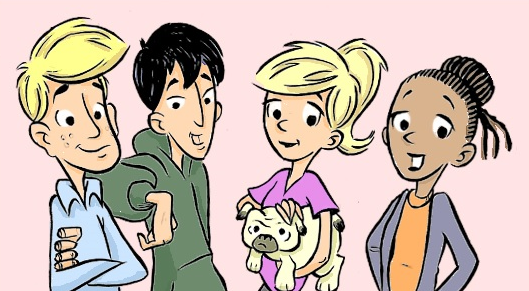 The Sam and Friends Phonics Books have been designed to support systematic and explicit phonics instruction, such as is included in the author’s comprehensive
The Sam and Friends Phonics Books have been designed to support systematic and explicit phonics instruction, such as is included in the author’s comprehensive 
 Download 2 FREE lessons (178 slides and a 15 min video) to check out
Download 2 FREE lessons (178 slides and a 15 min video) to check out 